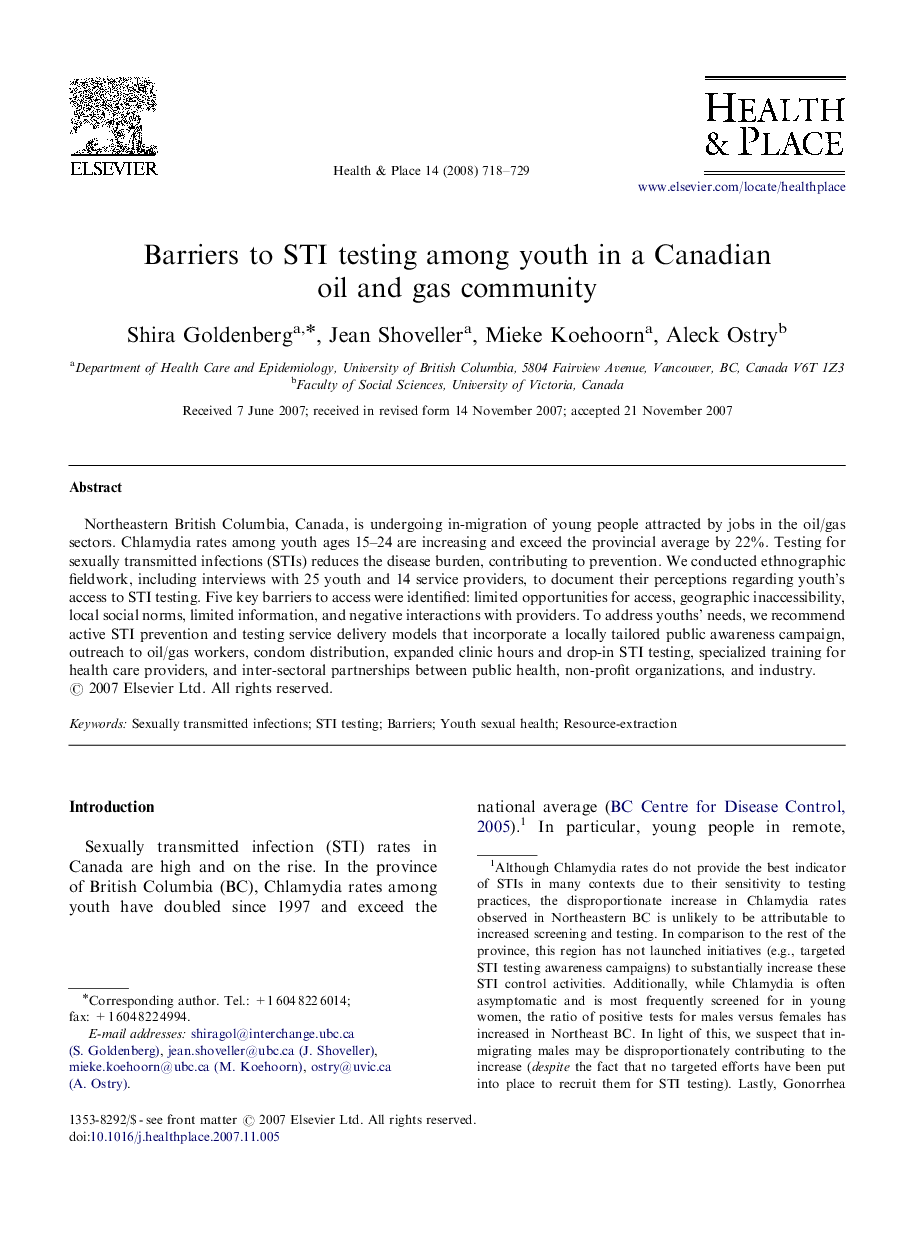| Article ID | Journal | Published Year | Pages | File Type |
|---|---|---|---|---|
| 1048944 | Health & Place | 2008 | 12 Pages |
Northeastern British Columbia, Canada, is undergoing in-migration of young people attracted by jobs in the oil/gas sectors. Chlamydia rates among youth ages 15–24 are increasing and exceed the provincial average by 22%. Testing for sexually transmitted infections (STIs) reduces the disease burden, contributing to prevention. We conducted ethnographic fieldwork, including interviews with 25 youth and 14 service providers, to document their perceptions regarding youth's access to STI testing. Five key barriers to access were identified: limited opportunities for access, geographic inaccessibility, local social norms, limited information, and negative interactions with providers. To address youths’ needs, we recommend active STI prevention and testing service delivery models that incorporate a locally tailored public awareness campaign, outreach to oil/gas workers, condom distribution, expanded clinic hours and drop-in STI testing, specialized training for health care providers, and inter-sectoral partnerships between public health, non-profit organizations, and industry.
